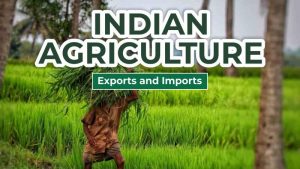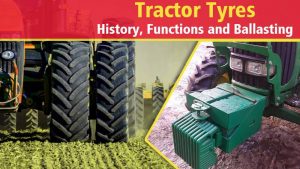Agriculture is the second largest employer in the world after services, employing more than a third of the global labor force. Wearing personal protective equipment (PPE) helps to reduce exposure to a variety of risks. A broad variety of diverse machinery, animals, plants, and goods are also used in agriculture, and they operate in both indoor and outdoor settings under a wide range of geographical and climatic situations. While large-scale, heavily mechanized agricultural enterprises are prominent in many affluent nations, labor-intensive farming is much more prevalent in many developing nations like India.
As a result, agriculture becomes one of the most dangerous industries, and many agricultural employees experience occupational illnesses and accidents each year. Exposure to dust and other organic compounds, such as pesticides and fertilizers, chemicals, and infectious agents, is one of the major contributing factors to such poor health.
Importance of PPE in agriculture:
In the agricultural sector, dangers can take many different forms, including sharp edges, falling objects, flying sparks, chemicals, noise, and a wide range of other potentially hazardous circumstances. Wearing personal protective equipment (PPE) helps to reduce exposure to a variety of risks. Gloves, steel-toed boots, goggles, earplugs or earmuffs, hard hats, respirators, and full-body suits are examples of common PPE.
The harm caused by pesticides depends on their toxicity and time of exposure. The chemical composition and formulation of the pesticide, its route of entry into the body, the amount that enters the body, and the duration of exposure all affect how severely pesticide poisoning manifests. However, it is not always eliminated. Wearing PPE can considerably limit the risk of skin, inhalation, eye, and oral exposure, and hence significantly reduce the chances of pesticide poisoning. All pesticide handlers, including applicators, mixers/loaders, flaggers, and early-entry agricultural employees, are required by law to adhere to all PPE guidelines listed on the product label. The minimal PPE that a person must wear when undertaking handling or early-entry activities is specified on a pesticide label.
Different personal protective equipment:
- Gloves:
When handling any pesticide, always use unlined, elbow-length chemical-resistant gloves. Your wrists are protected by the elbow-length sleeves, which also stop pesticides from seeping into your gloves through your sleeves. Just as important as glove selection is good glove use. By gently squeezing the gloves after filling them with air or fresh water to check for holes. If there are any holes, throw the gloves away. For proper disposal, wrap in plastic and place alongside an empty pesticide container. You won’t receive the same level of protection from every glove material. Certain materials will withstand certain herbicides and chemicals longer than others.
- Body Covering:
For slightly toxic and comparatively non-toxic pesticides, standard work gear of long pants and a long-sleeved shirt, shoes, and socks are permitted. Work uniforms and cotton coveralls that meet the definition of standard workplace clothing and offer comparable protection are preferred by many applicants. Application personnel should save one set of clothing exclusively for pesticide use. Separately wash and hang to dry from all other garments.
Wear a clean, dry protective suit that covers your full body from your wrists to your ankles while applying moderately dangerous or extremely poisonous substances. Long enough sleeves are required to cover gloves.
- Apron:
When fixing or cleaning spray equipment, as well as when mixing or loading, put on a chemical-resistant apron. This is a wise strategy for using pesticides of any kind and is crucial. Aprons are a great barrier against liquid formulation spills and splashes, but they are also helpful when working with dry formulations like wettable powders. Aprons are practical for use in warm regions and are comfortable enough to wear over other protective items. Pick an apron that covers your neck and at least your knees. A few aprons come with sleeves.
- Boots:
When handling or applying moderately or severely harmful pesticides, wear unlined chemical-resistant boots that reach your ankles. Buy boots with sturdy soles. Boots made of butyl and nitrile seem to offer the finest protection. Avoid wearing leather boots.
Try wearing chemical-resistant overboots with washable shoes if chemical-resistant boots are too hot to wear in warm areas or too challenging to put on (such as canvas sneakers or layered socks.) Remember to keep your pant legs outside of your boots so that no insecticide can leak inside of them.
- Goggles or Face shields:
When the chemical might come into contact with your eyes, put on protected safety glasses, a full-face respirator, snug-fitting, non-fogging goggles, or a full-face shield. For low-exposure scenarios, safety glasses with brow and side shields are allowed. If you are pouring or combining concentrates or working with a very poisonous spray or dust, you should always wear goggles or a full-face respirator. A face shield can be worn over goggles in high exposure conditions where both face and eye protection are required.
- Respirators:
Farmers are shielded from dangerous chemical inhalation by respirators. You can find out if you need a respirator by reading the label. Any prolonged exposure that carries a significant risk of pesticide inhalation should be considered wearing. While blending or pouring very dangerous insecticides, always wear a respirator. A respirator should also be worn by applicators who will be continuously exposed to modest doses of moderately dangerous pesticides for one or more days.
Different issues if the personal protective equipment can not be followed:
- Handling diverse animals or plant materials might cause skin irritations. Additionally, injuries or open sores on the skin can get infected by contact with soil, animals, or animal excrement.
- Farmers may experience issues with too much sun exposure. Wearing a full-brimmed hat, long sleeves, and applying sunscreen to exposed skin can all lower the chance of developing skin cancer.
- Due to chemical splashes or other chemical spraying, there is the risk of eye damage. Eyes can be harmed.
- Dangerous dust can be inhaled by the farmers if no proper dust mask is worn. That hazardous dust may enter a farmer’s respiratory system and have bigger respiratory issues like asthma.
- Among farmers and farm workers, hearing loss is a prevalent issue. Workers should wear hearing protection when operating or working close to noisy machinery because the majority of farm equipment cannot be operated in a sound-proof cage. For the majority of circumstances, earmuffs and plugs are available to provide hearing protection. For the majority of circumstances, a modern tractor cab with a noise reduction rating will be sufficient hearing protection.
To know more about other agricultural topics and farming solutions, install the Khetiguru application. For tractor, tractor price, latest news, etc visit the Khetigaadi website.




